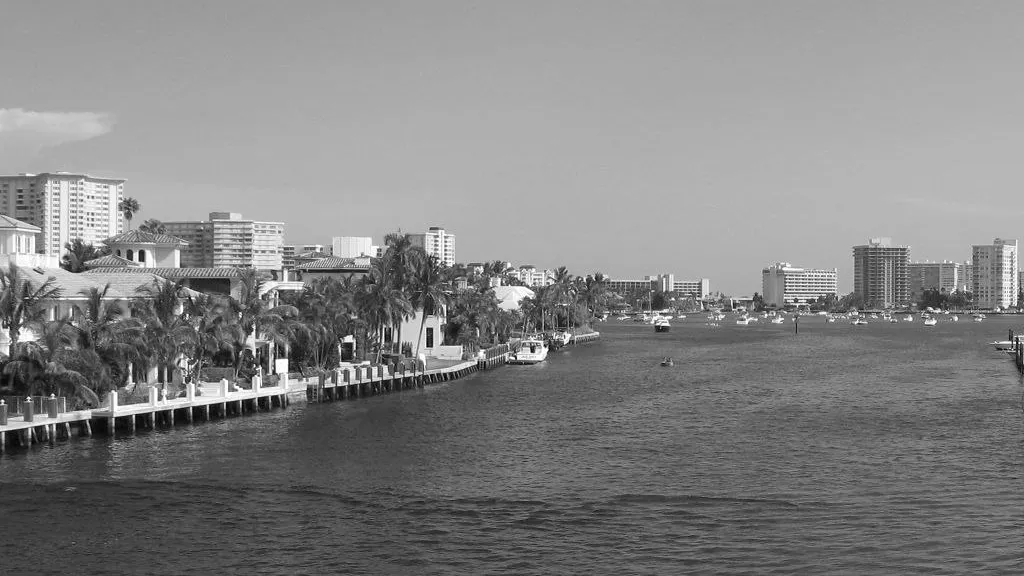The Long and Complicated History of Coffee Smuggling
Smuggling has been a part of coffee since the beginning, and continues in many forms today. In the process, it reveals much about the industry’s power structures.

Welcome to Part One of a new series exploring the shadowy side of coffee. Future articles will look at tariffs and ‘origin washing’, land theft, as well as the other ways in which coffee and crime connect.
Subscribe to get future articles in your inbox, and become a paid subscriber to support my work 👇
We take basic coffee traceability for granted. Sure, some grocery store blends go no further than listing “100% coffee” on their packaging—but if you’re drinking specialty coffee, you’ll likely have a fair amount of information at your disposal. Country of origin, of course, and probably region too; most of the time, you can get down to farm-level details.
Coffee consumers typically rely on the information provided by roasters or baristas, who in turn rely on the coffee importer, and so on. Provenance is communicated through shipping manifests, serial numbers, and above all through trust.
But what happens when that trust is broken? What happens if coffee from one country is smuggled into another, and then sold as something it’s not?
Smuggling is as old as the coffee trade itself. From the very beginning, coffee has been imported illegally, whether to circumvent monopolies, avoid taxes, or simply to earn more money. In countries around the world, individual farmers, organised gangs, and well-connected criminals have all taken advantage of a sprawling and opaque industry to move coffee under the radar. Moreover, they often do so with the explicit knowledge of the multinational companies they supply.
Even as technology improves and traceability becomes more important to consumers, it’s still very easy to circumvent the rules. Today, coffee smuggling may not be happening in vast quantities—official data is, unsurprisingly, scarce—but it does continue. It isn’t hard to understand why: Prices can vary hugely between neighbouring countries, and many farmers earn so little that sneaking a few bags across a border could make a significant difference to their income.
Ultimately, modern-day coffee smuggling is able to persist because of how the global coffee industry is organised—exposing whom it’s designed to benefit, and at whose expense, in the process.
You're reading this, so chances are you enjoy The Pourover. If you know someone else who might enjoy it, why not tell them via email?
An Incomplete History of Coffee Smuggling
Coffee smuggling has existed almost since the industry’s inception in the 15th century. Although its trade was originally closely controlled by Yemen’s rulers, in the 17th century, a Sufi saint named Baba Budan strapped seven coffee seeds to his stomach and took them to India. That same century, the Dutch smuggled a coffee plant to Europe, and from there to colonies in Ceylon (now Sri Lanka) and beyond.
Such was coffee’s value as a crop that it prompted subterfuge between colonial powers. In 1727, a Portuguese Brazilian official named Francisco de Melo Palheta, mediating a dispute between the Dutch and French governors of a divided Guiana, conducted an affair with the Frenchman’s wife. As Mark Pendergrast writes in his book “Uncommon Grounds”, “At Palheta’s departure, she presented him with a bouquet of flowers—with ripe coffee berries disguised in the interior. He planted them in his home territory of Para [in Brazil], from which coffee gradually spread southward”.
As the coffee industry became more globalised and regulated, smuggling graduated from individual adventurers pocketing beans to more sophisticated operations. “Since the beginning of its commercial cultivation, coffee growing, refining and marketing [have been] controlled and regulated by local, national, and international agents”, Jan Kuhanen wrote in a 2017 paper. “And since the beginning, the regulations have been circumvented by growers, buyers, and exporters for personal economic gain”.
By the 20th century, coffee was routinely moved across borders to avoid taxes and embargoes, or to cash in on higher prices.
According to Kuhanen, during the late colonial period in the 1950s, British-controlled territories around what is today Uganda, Tanzania, and Kenya were hotbeds of coffee smuggling. This was in part due to “significant price distortions between colonial territories”, Kuhanen writes.
In the 1970s, Ugandan dictator Idi Amin’s disastrous economic policies, combined with a U.S. trade embargo, made smuggling coffee into Kenya one of the only ways for rural Ugandans to make a living. According to John Kamau in The Daily Nation, more than 30% of Uganda’s coffee production was smuggled into Kenya between 1976 and 1977.
Although the trade was lucrative, “turning paupers into instant millionaires”, as Kamau put it, it was also risky. In 1975, Amin’s Economic Crimes Tribunal ordered the execution of 24 men who were accused of smuggling 500 bags of coffee across the border.
Regulations like the International Coffee Agreement, the first of which was signed in 1962 and which set export quotas from producing countries, were designed to stabilise world commodity coffee prices. However, they also left the door open for smugglers. These quotas resulted in surpluses, which were supposed to be consumed domestically or exported to countries that had not signed the ICA.
However, one enterprising Jordanian national in Miami named Munther Bilbeisi saw an opportunity: During the 1980s, he bribed farmers to acquire cheap surplus coffee from Central America, which he said was to be sold in non-ICA-signing Jordan or Syria. According to a 1991 investigation by Jonathan Beaty and S.C. Gwynne for Time Magazine, the coffee never made it. Instead, it was shipped via Miami, its journey smoothed by more bribes, where it was rebagged and sold to major U.S. companies including Chock Full o’ Nuts and Chase & Sanborn. An eventual lawsuit alleged that a former president of both companies, Arthur Berman, had full knowledge of the coffee’s illicit origin and accepted “substantial commissions” to facilitate the sales.
This story is wild, and I’ve barely scratched the surface. The rest includes a fraudulent bank that financed Bilbeisi’s smuggling, gun running and arms sales, and links to Panamanian dictator Manuel Noriega. For more, check out this bonus article (for paid subscribers):

‘A Major Problem’
Coffee smuggling continues into the 21st century, although it’s hard to know to what extent. (When I reached out to the International Coffee Organisation, they told me that they only track “official statistics”.)
“How widespread [smuggling] is in terms of volume is difficult if not impossible to ascertain, but I suspect it’s not a staggering amount of coffee in terms of tonnes”, coffee consultant Christopher Feran tells me. Feran also notes that smuggling is more of a concern with commercial and commodity-grade coffee compared to specialty, “where cup and traceability are as important as price”.
Today, smuggling is likely to take place anywhere there is a border and a price disparity, Feran says, especially where borders are relatively easy to cross. This is the case in Central and South America, as well as in parts of Africa.
In 2006, Reuters reported that, according to Honduran officials, “smuggling coffee from Honduras into Guatemala to profit from higher prices and tax breaks there has become a serious problem”. Guatemalan officials played down the severity, although Reuters again covered the issue in 2016.
That same year, Reuters also reported that coffee was being smuggled from Guatemala to Mexico due to currency devaluation and “a weak crop” in the latter country. “When exporters go out to the field to buy coffee, the producers say there’s none left, that it’s gone to Mexico”, said Jean-Paul Brichaux, then-executive director of Guatemala’s Coffee Exporters Association.
Further south, there were reports in 2022 of coffee being smuggled from Peru to Colombia to take advantage of higher prices. At the same time, Ecuador’s dollarised economy means that it is beneficial for some Colombian farmers to sell their coffee across the border and be paid in U.S. dollars.
In Africa, historic trends have switched. During Amin’s reign, Ugandans were smuggling coffee to Kenya; now, the opposite often happens. According to a 2017 story in The East African, coffee could be sold across the border in Uganda for nearly double what it fetched in Kenya.
The Democratic Republic of Congo also experiences persistent issues with coffee smuggling, especially along its eastern border. The country has been wracked by instability ever since gaining independence from Belgium in 1960. As Amnesty International reports, “decades of conflict have been fuelled by ethnic tensions, political rivalries, corruption and fighting for control of valuable natural resources”. Since 1996, six million people have been killed and a further seven million displaced as a result of the violence.
The country’s coffee industry has also been impacted by the violence and displacement. Once the DRC’s second-biggest export after copper, coffee production fell from nearly 120,000 tonnes in 1989 to under 6,000 tonnes in 2010. Over the next decade it increased slightly, in the wake of a government-backed, $100 million recovery plan, but despite the ambition and funding, production never reached the highs the programme promised.
Alongside the government investment, various organisations and private groups have professed to help the DRC’s coffee sector recover. Nespresso’s Reviving Origins is one very well-promoted example, while the United States Agency for International Development (USAID) also funded multiple projects in the country before it was shut down in February 2025.
These investments helped to increase production, which reached more than 62,000 tonnes in 2023. However, experts estimate that more than 70% of the DRC’s coffee is smuggled abroad, mostly to Uganda and Rwanda.
“Smuggling is a major problem in the coffee sector in the DRC, particularly in the eastern part of the country”, says Linda Mugaruka, a Q grader who runs Yetu Qawah, a cafe and roastery in the city of Bakavu, as well as the exporting company Optimist Traders. Mugaruka explains that, for many farmers in the DRC, selling across the border not only fetches better prices but payment is fast—and in cash—and there are far fewer bureaucratic constraints. A 2017 article in the New York Times reported that Congolese farmers can earn 15% more when selling in neighbouring countries.
A Simple Solution
Smuggling has always been a part of coffee, and the way the industry is organised—with an often-murky supply chain, informal purchasing relationships, and unequal value distribution—means that it likely always will be. Coffee’s profits are hoarded by those with power and resources, leaving everyone else with razor-thin margins. It is no wonder that some might look to alternative means of trade, whether driving their coffee a few miles over the border or accepting cash from someone who is going to do likewise.
That’s not to suggest that smuggling is without harmful consequences for farmers and the wider industry. The practice impacts “the perceived quality of Congolese coffee”, Mugaruka says, as well as the economic stability of producers.
One suggestion to combat smuggling would be to “[promote] local coffee consumption in the DRC, instead of relying solely on the international market”, she says. This push to keep more of coffee’s value within producing countries has become increasingly popular in recent years.
On a broader scale, Mugaruka says, the coffee sector needs to work harder to make coffee farming more sustainable, and selling through formal networks more attractive. The industry needs to “[strengthen] inter-institutional coordination, transparency of flows, and logistical monitoring throughout the supply chain”, she says.
Feran agrees that the way to disincentivise smuggling is to make coffee farming more economically sustainable. It might sound simple, “but that truly is the answer”, he says.
Unfortunately, despite this being a known problem for decades, farmers continue to be among the most disempowered stakeholders in the coffee industry. Until those with power decide this is an issue worth taking seriously—and the largest actors in coffee finally decide to pay farmers more—the conditions that make smuggling attractive are almost certain to persist.
Thanks for reading! If you'd like to get even more articles like these, become a paid subscriber to The Pourover:







